|
Periods of Chinese History
|
 |
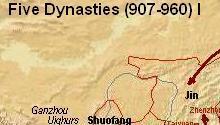 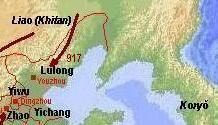
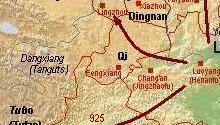 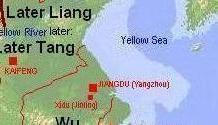
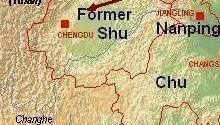 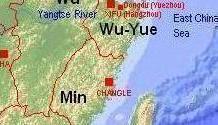
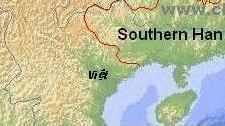 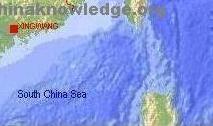
After the dissolution of the central government of the Tang dynasty 唐 (618-907) the empire was controlled by military commissioners (jiedushi 節度使) that ruled independently over China's provinces and finally founded their own empires and dynasties. Northern China was largely controlled by a succession of short-lived dynasties called the Five Dynasties 五代 (907-960) while the south was occupied by several relatively stable empires called the Ten Kingdoms (Shiguo 十國 (902-979) (actually one of these was located in the north: the Northern Han 北漢). The capital of the Five Dynasties was Kaifeng 開封 (modern Kaifeng, Henan), which was the first time that this city was selected capital. It remained the main seat of the government through the Northern Song period 北宋 (960-1126) and from then on was no more than a provincial city. The secondary capital was Henan Prefecture 河南府, the modern city of Luoyang 洛陽, Henan. It was only the Later Tang dynasty 後唐 (923-936) that chose Luoyang and Chang'an 長安 (Jingzhao Prefecture 京兆府; modern Xi'an 西安, Shaanxi) as their seats of government. While the first of the Five Dynasties, the Later Liang 後梁 (907-923), had to accept the existence of several independant area commands in the north (Lulong 盧龍, Yichang 義昌, Yiwu 義武, Zhao 趙, Jin 晉, Dingnan 定難, Shuofang 朔方, and Qi 岐), the Later Tang could defeat all of them except Dingnan. Furthermore, the Later Tang armies were able to occupy the realm of Former Shu 前蜀 (907-925) in Sichuan, one of the Ten Kingdoms, but only for a short while. Dangerous neigbours of the Five Dynasties was the federation of the Khitans 契丹 that had founded the Liao empire 遼 (907-1125). In the south there were rarely political changes in the landscape of the Ten States, except in 937 when the state of Wu 吳 (902-937) was replaced by the Southern Tang 南唐 (937-975).
 
 
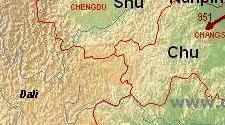 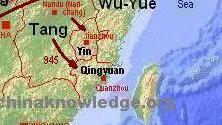
 
In the second phase of the Five Dynasties period the northern area remained relatively stable except the northern border that was permanently attacked by the troops of the Liao empire. Three dynasties followed each other: Later Jin 後晉 (936-946), Later Han 後漢 (947-950), and Later Zhou 後周 (951-960). In 951 a military commissioner founded the Northern Han empire that occupied the northern region of modern Shanxi. In Sichuan, the Later Shu 後蜀 (934-965) followed the Former Shu. The empire of Southern Tang began to dominate the south of China by destroying the states of Min 閩 (909-945) and Chu 楚 (926-951). Nonetheless the area of Min, the modern Fujian province, was controlled by two independant military commissioners in the states of Yin 殷 and Qingyuan 清源 (see history of Min).
The western territories were totally lost for the Chinese empires and stayed under the control of Uyghurs (Huigu 回鶻) and Tibetans (Tubo 吐藩). At the upper course of the Yellow River the Tanguts (Dangxiang 黨項) should eventually found the Western Xia empire 西夏 (1038-1227). In the southwest the empire of Dali 大理 emerged. Vietnam was finally really independent from China and was ruled by the Ngô 吳氏 and Đinh dynasties 丁氏. Korea was now governed by the Koryŏ Dynasty 高麗.
2000 ff. © Ulrich Theobald · Mail
|
|

Map and Geography

Event History

Emperors and Rulers
-- Ten States

Government and Administration

Literature and Philosophy
 (Tang) (Tang)
Religion
 (Tang) (Tang)
Technology and Inventions

Economy
 (Tang) (Tang)
Arts
|
